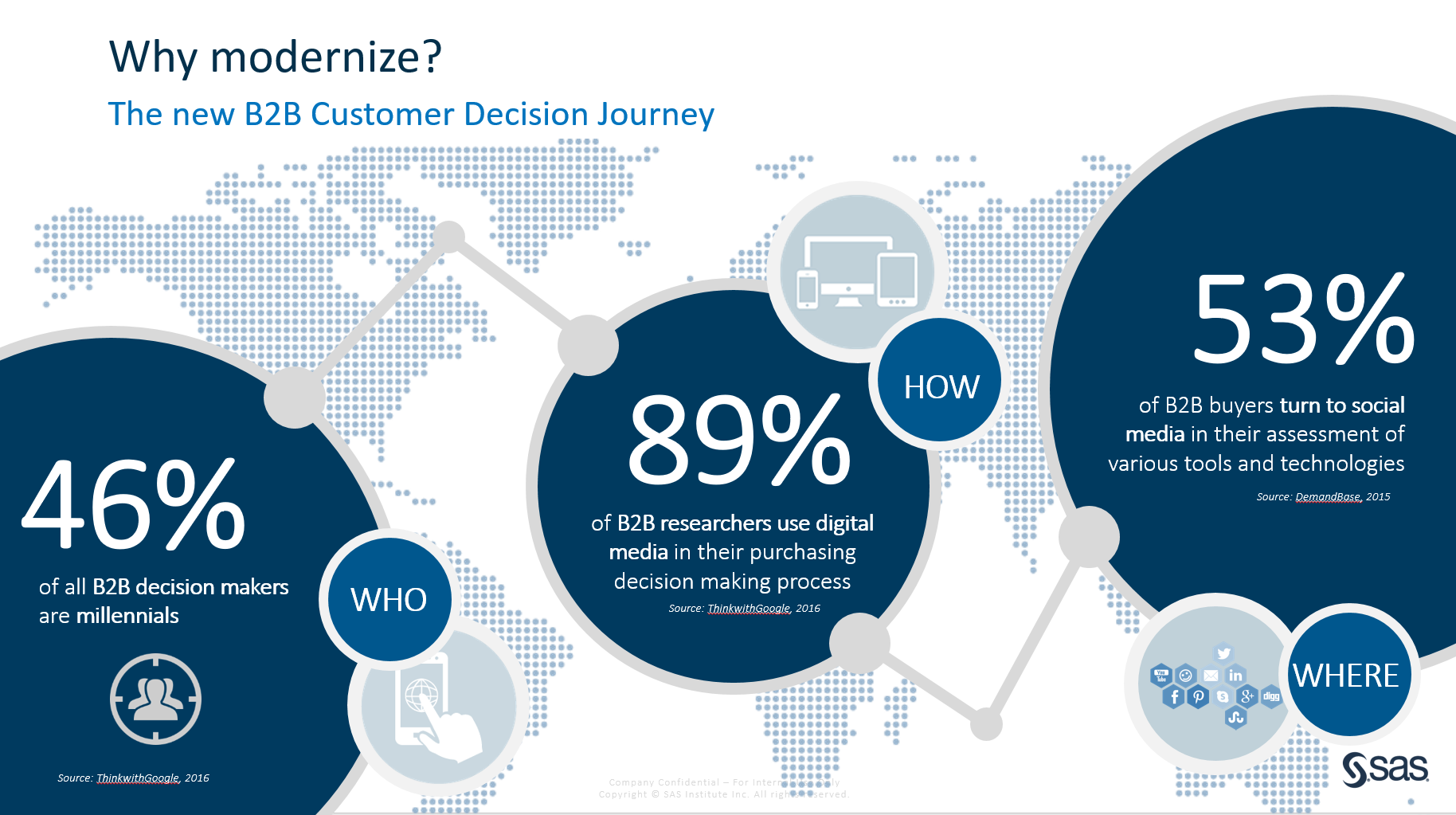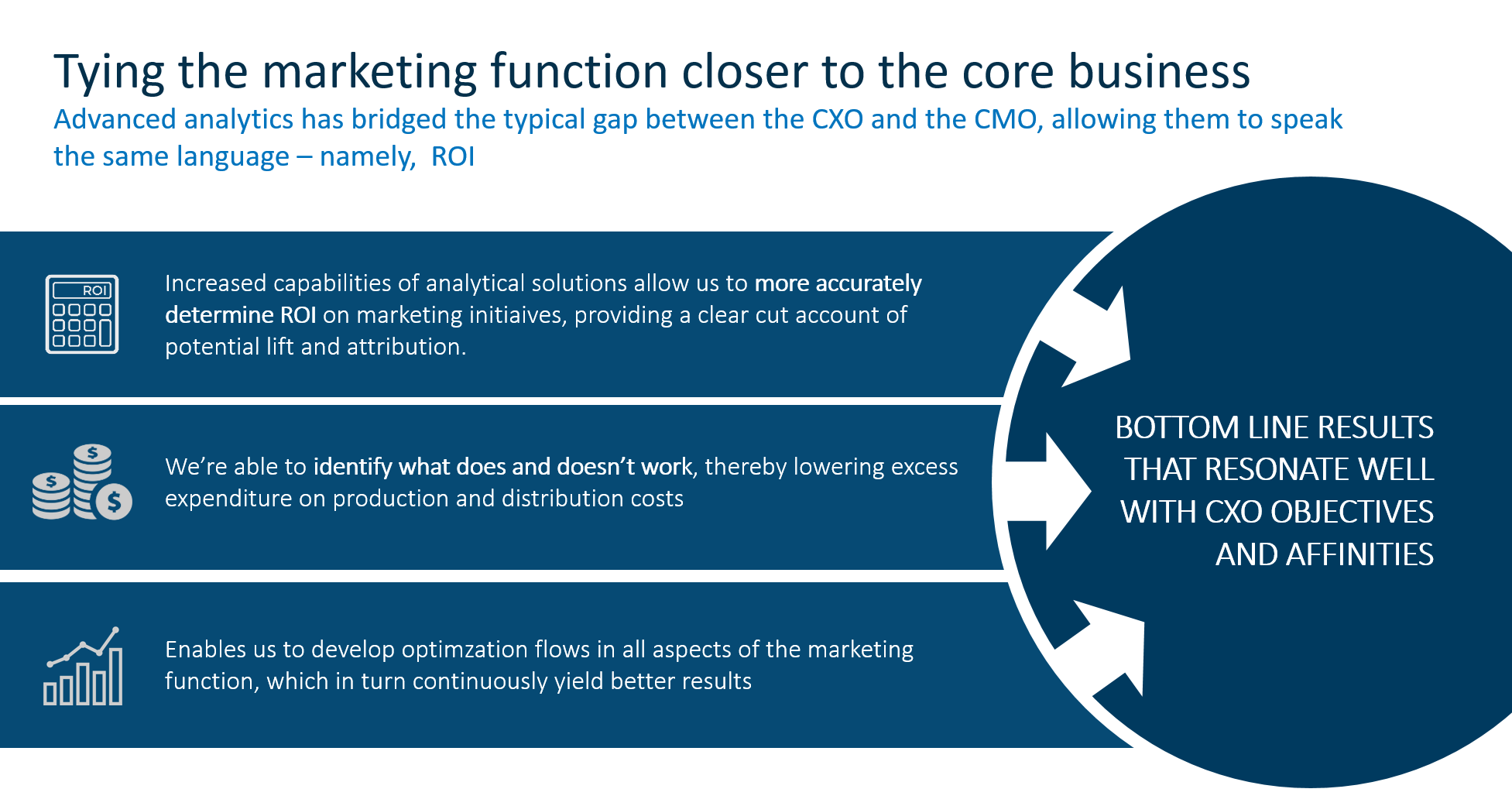At a time when ‘fake news’ has acquired its own presence on Wikipedia, it is worth reflecting a little on something more fundamental - the difference between facts and opinions. One of the most critical points to keep in mind when reviewing a plan, or a performance report, is to distinguish between facts and opinions. Nowhere has this become more significant than in marketing.
CMOs whose decision-making is based on facts will always outperform their peers who are using only gut instinct is nothing new. As the customer journey has gotten more complicated, gathering the right facts is a professional discipline in its own right.
Updating your view of the customer journey
The B2B customer journey often used to start with a conversation between customer and sales rep, with a single touch-point between customer and company. That is very definitely not the case now.
According to ThinkwithGoogle, 89% of B2B researchers use digital media during the initial stages of their purchasing decision. More than half—53%—use social media. This may be because almost half, 46% of B2B decision-makers, are now millennials, the first generation of ‘digital natives’.
At the same time, the number of channels has proliferated. B2B customers may be looking for information on websites, via social media, face to face or by phone. And whatever way they make contact, they want the same response, and they want to be recognised as the person who was in touch before, even if that contact was via a different channel. If Amazon can do it, why can’t everyone? We live in an omni-channel world, and that means companies need a coordinated strategy that works across all channels.
Using analytics to make sense of the world
This adds up to a bewildering, and ever-increasing, complexity of contact points between customer and company. All these need consistent messaging. The only way in which B2B companies can really make sense of their customers’ ever more complicated journeys, and provide this consistent messaging, is to lean on support from analytics. They need modern analytical tools that can turn key metrics into actionable insights. Only by using these tools can companies test activities, and react quickly and effectively to customers.
We can unpack the benefits of analytics into three key areas: customer, content and distribution insights. Customer insights mean understanding who is in your target group of customers, their preferences and their affinities. Content insights means being able to identify which content works for which segments of your target group of customers. Distribution insights tells you which customers prefer which channels, for which information. This helps you to identify the right channel mix across online and offline options.
Put these together, and companies can provide the right insights, at the right time, to the right people, through the customer’s channel of choice. In practice, this means being able to communicate effectively with each customer, depending on their stage of decision or buying cycle. Getting it right means reduced costs and a much higher business impact from your marketing organization.
Moving marketing closer to core business
But what has perhaps been even more important about the new world is that it has moved marketing closer to the core of the business. Advanced analytics has bridged the gap between the ‘creative’ nature of marketing, and the ‘analytical’ nature of, say, the world of the Chief Finance or Chief Revenue Officer. Now the whole C-suite, including the CMO, are talking about data.
In particular, analytics enables a clear understanding of return on investment on marketing activity. It is possible to see almost straight away what does and does not work. Marketing can get better and better at what it does, reducing time spent on irrelevancies, and ensuring that marketing spend is focused on what matters.
This sounds good in theory, but does it work in practice? The answer is a resounding yes. SAS solutions have helped our customers to improve their sales efficiency and lead generation, and reduce customer attrition. We have even had a taste of our own medicine by using Visual Analytics to improve our marketing function. We are now able to track and report all our marketing activity, and the result has been a real eye-opener. As an example and looking at our Nordic operations I am happy to say that we have achieved an 8% increase in qualified leads, a 17% increase in average deal size, and a massive 40% increase in return on investment in marketing activity. Data and analytics are king in improving the marketing function and making sure it is contributing even more to the business.
More on the topic: Take a 10-minute assessment to evaluate your data-driven marketing capabilities and get best practices to enhance customer journeys, improve business processes, and boost profits.


